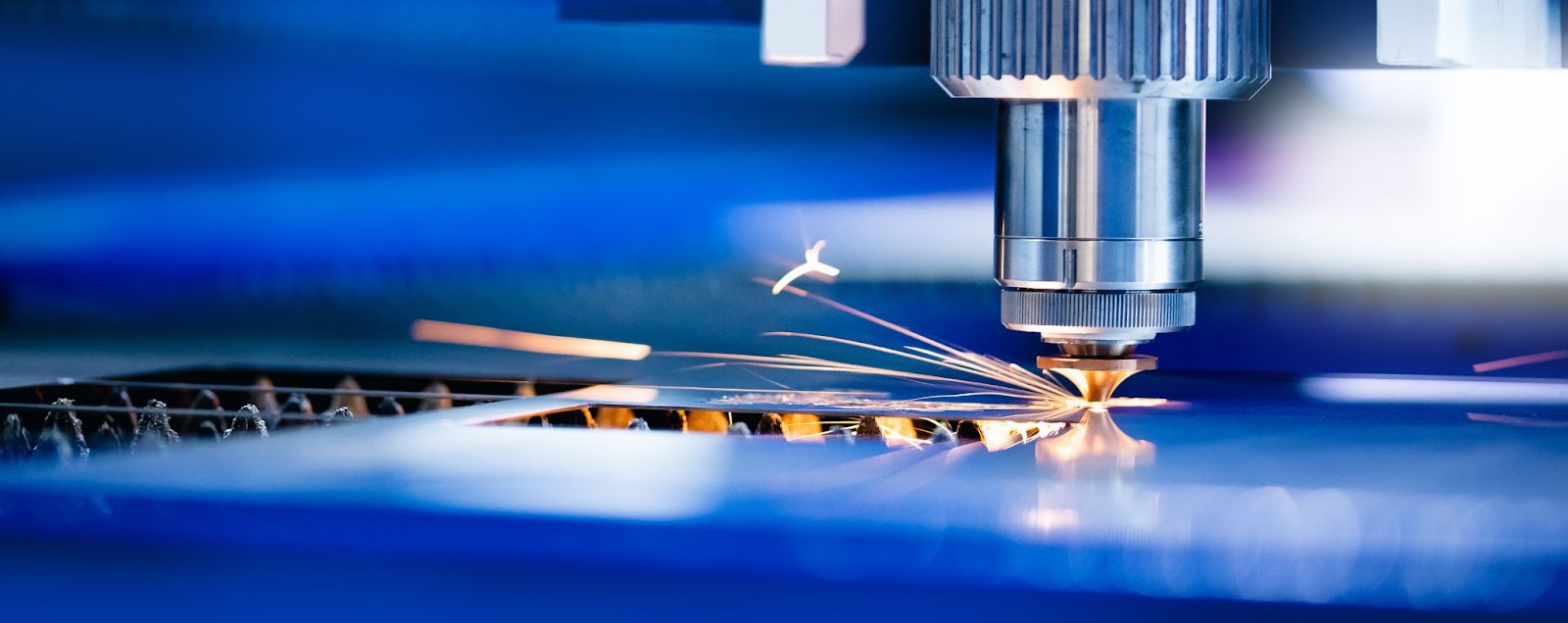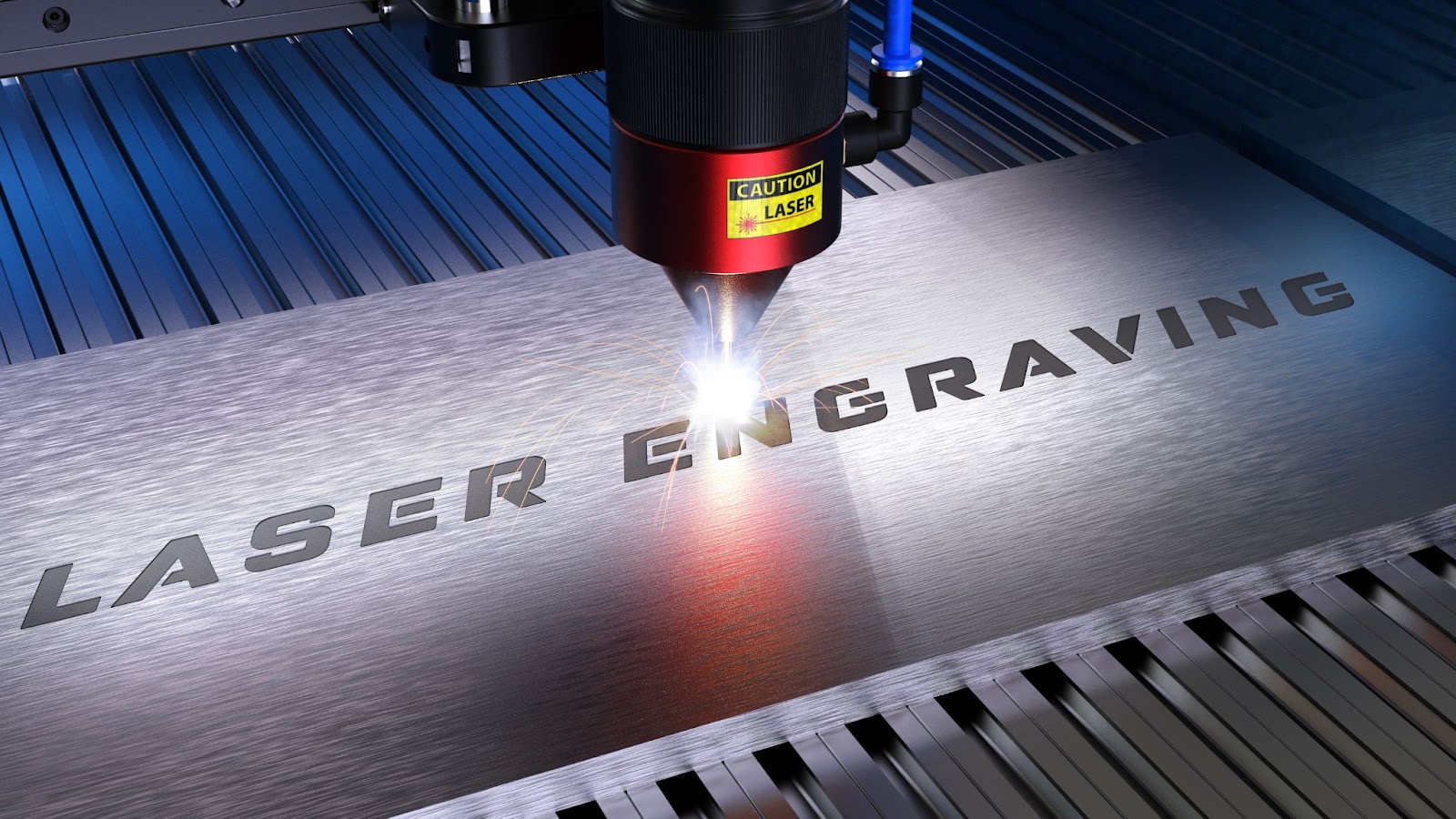Time to read: 5 min
Industrial part marking is a critical, but often overlooked, component of new product development for CNC machined parts. Getting part marking right the first time is essential to traceability, configuration management, and ease of replacement for parts that wear. Part marking is even more critical for traceability and identification of custom or prototype CNC machined parts, as they are often unique and shouldn’t be interchangeable with regular production parts.
The most commonly utilized types of industrial part marking are painting, inking, adhesive labeling, etching, and engraving. Engraving is a durable and repeatable part-marking process, and in this article we’ll discuss the different methods of engraving.

Why Choose Engraving for Industrial Part Marking?
Engraving offers a more wear-resistant marking than most other industrial part marking methods such as paint, inking, or adhesive labeling. Engraving is also more resistant to environmental conditions such as humidity, extreme heat or cold, chemical exposure, and dirt or debris. Engraving is an excellent choice if you need a permanent method, but you can reference the following table as a quick guide to help select the right part marking method for your project:
| Part Marking Method | Application Method | Wear Resistance | Environmental Resistance | Relative Cost |
| Adhesive Labeling | Typically applied as a sticker; may be a plastic/metal label with a sticky backing; or may be applied with an adhesive that is rubber-based or acrylic-based; | Depends on the adhesive/backing type; there are also abrasion resistant inks or finishes to choose from; | Susceptible to lifting when exposed to humidity or liquids; lamination or an overlay of resin/polyester can aid; | Basic Labels: $ Durable Labels: $$ Metal Labels: $$ |
| Chemical Etching | Chemicals are utilized to produce text on the surface of metal; the metal may be directly etched on the part or on a secondary metal label; offers high precision and can be applied to thin materials; | Excellent wear resistance | Same environmental resistance as the metal being etched | $$$ |
| Engraving | May be accomplished by a variety of methods including: laser, CNC, hand stamps, press stamps, dot peening; | The highest wear resistance due to depressions in material | Excellent environmental resistance (greater to or equal than the base metal) | $$$-$$$$ |
| Inking | Can be accomplished as simply as a marker or more complexly as a pneumatic sprayer/inkjet printer directly printing on a part; | Low | Surface preparation is key to durability but this type of labeling is not considered to be superbly environmentally resistant. | $ If using pneumatic spraying equipment, initial equipment cost drives per part marking cost. |
Types of Engraving for CNC Part Identification
Engraving is a material removal process whereby tooling cuts into your part with fine detail to produce lettering, an image, or other marking permanently on your part. Common applications include serial number or part number identification, installation indicators, and branding or other decorative visual features. Engraving has been around for several thousand years, with engravings as old as 290,000 B.C. found in quartzite caves in the central India Madhya Pradesh region. With so much time between the Lower Paleolithic time period and now, engraving technology has come a long way. And while we’re still using some ancient technology for engraving, there are now many engraving options to choose from for your CNC machined parts.
Hand Engraving
Hand engraving is one of the oldest forms of engraving that is still popular today. This type of engraving is used artistically and functionally for a variety of applications and industries. While it uses ancient roots, it is still useful for modern CNC machined part identification. Hand engraving can be performed in a few different ways:
- Pressing a tool into a part with a hammer (bevel, chisel, etc.). The type of tool and force required depends on the hardness of the metal being engraved.
- A hot stamp tool is heated and held against a part, inscribing an embedded identification on the part’s surface.
CNC Engraving
CNC engraving offers the highest level of precision and detail for engraving, along with the ease and repeatability afforded by CNC technology. Most CNC machines can do the job as long as they have a high-speed spindle, because the small cutters utilized to get such fine detail have to operate at high speeds. These high operating speeds also provide a higher efficiency. You can utilize a desktop or a large CNC machine to perform engraving as long as the work table is sufficiently level and flat so the depth of the engraving doesn’t vary.
You can engrave CNC machined parts of various materials, including wood, metal, and hard plastics. You just need to set up a 2D contour toolpath for each vector in the part marking design and ensure you have the correct tool for the engraving project. There are specialized engraving tools, but also some small ball end mills are suitable.
There are many CNC engraving methods, including diamond drag engraving. This type of CNC engraving is performed when a spring-loaded diamond tip is moved along the surface of the part. This tool isn’t intended to be used while it’s rotating, which is unusual for a CNC machine. Diamond drag engraving doesn’t provide much depth control, but it’s useful for brittle materials not typically engravable via CNC and other metals like aluminum, stainless steel, and brass.
Pro-tip: If you’re considering adding a bolt-on laser engraving tip to your CNC machine, don’t. The safety concerns and software needs will be too much to retrofit your existing CNC machine with.

Laser Engraving
Laser engraving is the most flashy and expensive engraving method. Whereas laser etching melts the material to change its roughness, laser engraving sublimates and removes material from the surface.
On a microscopic level, laser engraving works by superheating the metal to its vaporization temperature. That’s right, the lasers literally vaporize metal. That temperature is around 1000-3000℃ for most metals, and must be reached within a few milliseconds to be successful and repeatable.
The metal that the laser makes contact with must change directly from a solid to a gas without becoming a liquid — molten metal would re-solidify and disrupt the shape being engraved. As the metal is vaporized, it becomes fumes and is extracted from the area.
While the cost of laser engraving is significant, the part marking will never fade or wear because of its depth. Laser engraving can also be utilized to engrave hard materials that are otherwise difficult to engrave mechanically. Most laser engraving is performed with CNC laser engraving machines.
For all your custom or prototype CNC part manufacturing needs — including engraving — Fictiv is your operating system for custom manufacturing that makes part procurement faster, easier, and more efficient. In other words, Fictiv lets engineers, like you, engineer.
Create an account and upload your part to see what our instant quote process, design for manufacturability feedback, and intelligent platform can do for you. Our CNC machining service can create your parts in as little as 2 days!








